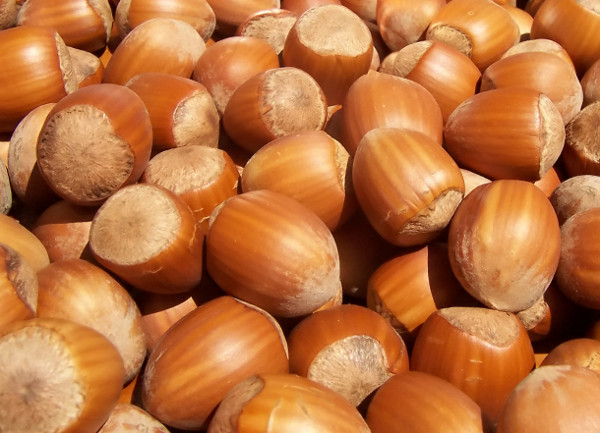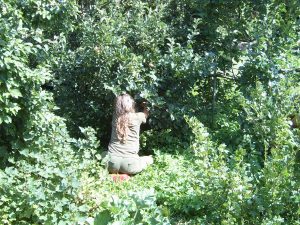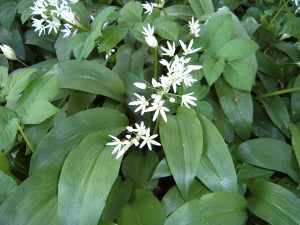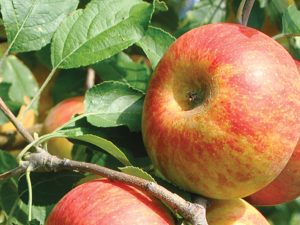Nuts & nut trees - introduction

“Chestnuts are delicacies for princes and a lusty and masculine food for rusticks, and able to make women well-complexioned.” – John Evelyn
What are nuts?
As a rough definition, nuts are seeds more than about 1cm in diameter. There is a botanical, precise definition for a nut, but there is also a culinary definition – most edible, hard kernels are referred to as nuts. We’re more concerned here with the culinary definition – if you’re a botanist, please forgive us.
Of the commercially-grown nuts in the UK, only hazel is native. It would have been a staple of the first hunter-gatherer tribes in Britain, and helped them survive the winter, but would have started to germinate in the spring. Roasting or drying them on or near the fire would have made them last several years. A few hundred years ago, a hazel-growing industry developed in Kent, particularly one variety – the Kentish cobnut. There are still several hundred acres of commercial hazels in Kent. The hazelnut is also called the filbert or cobnut, and there is a slight difference in meaning. The papery bracts that surround the nut completely enclose a filbert, but a cob has open bracts that expose the nut.

Sweet chestnuts were brought over by the Romans, and have become naturalised. Wild stands of sweet chestnut usually yield quite poor nuts, as they’re not well adapted to the British climate. But around the Mediterranean they used to be a staple carbohydrate (they have a similar nutritional value to rice). They were traditionally dried in two-storey barns. The nuts were piled up on the floor of the upper storey, comprised of wooden slats with gaps between them. A fire was started below, and the heat and smoke dried and smoked them, after which they’d store for years. When wheat swept through Europe from Africa, it was grown in the flat valley bottoms and chestnuts were planted in the hills. In many areas around the Mediterranean there are still lots of chestnuts on the hillsides.
Walnuts probably have a Roman origin too; they haven’t become naturalised in the same way, although they occasionally self-seed. There’s a history going back several hundred years of nurserymen selling walnut trees – mainly of French origin.
Almonds are also from the Mediterranean, and are more difficult to grow in the UK. They do better in the east of the country, and particularly in London, as it’s usually a degree or two warmer, and provides more shelter.
Acorns and beech nuts (both native) can be edible (see below). Horse-chestnuts (native to the Balkans and introduced into Britain in the 17th century) are definitely not edible, as they contain saponins – not good for eating but good for making soaps; and of course they’re indispensable for playing conkers.
The nut industry is huge world-wide – much more so than in the UK – and particularly in the US (walnuts & almonds) and China (walnuts and chestnuts). In Britain we often see chestnuts from China in shops before Christmas, which is a bit crazy ecologically (but clearly it makes sense economically).
Other popular nuts from around the world include pecans (not tropical, but need a warm climate, like the southern US), and tropical nuts such as Macadamia (from Australia) and Brazil nuts (from all over tropical South America, not just Brazil).
Peanuts are annual legumes – so are really a type of bean. The flower head bends over and buries itself underground, where the peanuts develop in a pod.

What are the benefits of nuts?
- As with any tree crop, they store carbon, prevent soil erosion and provide habitat during their productive life, and timber and/or firewood at the end of it
- Animals can be grazed or other crops can be grown underneath nut trees, especially chestnuts and walnuts
- Nuts are very good for us: if they’re high in carbohydrates like chestnuts, they can play a similar role to grains our diet; and nuts like hazelnuts and walnuts contain oils that are extremely beneficial – particularly for the heart
- People with grain allergies can substitute grains for chestnuts and chestnut flour, as they contain no gluten (some people have nut allergies of course, but this is usually to peanuts)
- Nuts are a good source of concentrated protein, so can replace meat in lots of recipes
- The benefit of growing your own is that they taste much better; nut growers would say that though, but when you consider that most commercially-grown nuts have endured herbicides, fungicides, insecticides, storage and transport, they may well be right
What can I do?
Picking from the wild
In the UK, this will be mainly hazelnuts in September. Wait until they start dropping from the tree, but don’t wait much longer, or grey squirrels will have them all. Keep your eyes peeled from early September, and when the first ones begin to fall, shake the branches and all the ripe ones will fall too.
Sometimes you can harvest sweet chestnuts from the wild too, but the quality won’t necessarily be the best.
Acorns are the nuts of the oak tree. They’re edible, but contain tannins which give them a bitter taste, and need to be removed. Harvest acorns in October, leave them to dry for a week in a warm, sunny place, then shell them – cut lengthways with a sharp knife and the two halves of the kernel will fall out.
Beech nuts are too small and fiddly to treat as a crop, but you can nibble them when you’re out walking.

Planting
First – how much space do you have? Chestnuts and walnuts become big trees, and so need to be planted 12-15m apart. You can plant other things between them for the first 10-15 years, but they need a lot of space. Hazels are smaller and can be planted 5-6m apart – the same as most fruit trees. Plant nut trees in the winter when they’re dormant.
Hazels are not self-fertile, so you’ll need at least two different named varieties. There are a dozen or so named varieties selected for good fruiting. Individual hazel trees have both male and female flowers (catkins) that open at different times of the year, so they can’t pollinate themselves. The flowers of different varieties open at different times, so you need to get male and female flowers on different trees open at the same time for pollination to take place – otherwise no nuts. If you have wild hazel or a hazel hedge nearby, that could work too. Buy young ‘named’ trees from a fruit/nut tree nursery. There are only a few nurseries in the UK specialising in young nut trees. Hazels will have been grown on their own root, not grafted like fruit trees, and you’ll usually buy them around 1m tall.
Walnuts and chestnuts are unlikely to have pollinating trees nearby, so you’ll need two different varieties at least. There are some good pollinating varieties of chestnut, including Marigoule and Belle Epine, so if you only have a few trees, maybe go for those. Most chestnut trees will have been grafted in the nursery, usually to a seedling root stock. With apples for example, you can choose a rootstock that will determine the eventual size of your tree, but you can’t do that with chestnuts or walnuts yet. Chestnuts will be 1-1.5m tall when planted.
Caring for nut trees
Chestnuts need staking for the first year, and you need to protect all young trees from rabbits, but after that, nut trees don’t have any major pests or diseases unless they’re grown as large-scale monoculture – but this is the same for any crop. A problem for large-scale growers might be the nut weevil, but in a non-monoculture you won’t have that problem.
Chestnut and walnut trees produce excellent timber (walnut was often used for Rolls Royce dashboards); but if you’re looking that far ahead, there are things to think about, like pruning the side branches to make sure the tree grows straight and tall.

Harvesting
Hazels start producing nuts after 2 years, and chestnuts and walnuts after 4. Hazels flower in late winter – catkins appear from Feb-March and sometimes April. Depending on the weather at this time, crops can vary a lot. If it’s very cold in late winter, it probably won’t be a good crop that year.
The main problem when harvesting hazelnuts or walnuts is competition from grey squirrels, which can be serious competition indeed, as they can strip trees before the nuts are even ripe. There are no easy answers, but we know people who treat them as another resource, and shoot and eat them (in casseroles). Cats and dogs can also make them think twice, although they’re very agile and quite fearless. The Forestry Commission is working on a grey squirrel contraceptive.
Chestnuts have the advantage that their nuts are in a spiny burr, which stops squirrels eating them on the tree. When the nuts are ripe (October), the burrs open and the nuts fall to the ground. It’s important to harvest chestnuts frequently so that they’re not lying on the ground too long. They’re more perishable than other nuts, and will pick up moulds and rot, or get eaten by mice. How fast the nuts fall from the tree depends on the weather. If there’s been a gale, the day after would be a good time to harvest.
You can find a tool called a nut wizard for harvesting fallen nuts. It’s a good idea, as it doesn’t require bending.

Eating
You can store most nuts for several months, and eat them raw – and of course chestnuts are delicious roasted. You can find recipes involving nuts online and in books (see resources).
You can store fresh chestnuts in the fridge for 4-6 weeks, or you can dry them in their shells in a dehydrator at 40°C for 3-4 days. Once dried, they’ll store for years. The brown shells are brittle when dried, and to remove them you can put the nuts in a sack and bang it against a floor or wall – the shells will crack and fall off. Soak dried chestnut kernels overnight like pulses and cook the following day (hazelnuts and walnuts don’t need to be soaked). Chestnuts can be ground to make excellent flour that can be added to bread mixes. It doesn’t contain gluten, so it can’t be used to make risen bread, but it makes great pancakes.
Grind acorn kernels (see ‘picking from the wild’ above) into smallish particles in a coffee grinder. Half fill a jar with the acorn meal, and fill to the top with water. Put it in the fridge or somewhere cool for 3-4 days. Once a day, pour off the water and refill, and the tannins will leach away. Drain off the meal and use in cooking – add to stews, soups or bread / biscuit mixes.
It’s considered important by some people to ‘activate’ nuts before you eat them. Nuts and seeds contain phytic acid and enzyme inhibitors which help the seed germinate into a plant at the right time (it’s main goal) but that hinder our ability to digest them (see the video above for a great explanation). So by soaking the nuts, you fool them into thinking that it’s time to grow, which activates them into transforming these indigestible components. You can then eat them fresh from soaking, or re-dry them in an oven or dehydrator for storage, after which they’re generally much tastier and easier to digest.
Starting a small business
Quite a few small businesses based on nut orchards have started since 2000. The potential for success is quite high, as nuts (particularly organic nuts) are quite expensive. The economics work pretty well, especially for walnuts and chestnuts.
Specialist(s)
Thanks to Martin Crawford of the Agroforestry Research Trust for information.






7 Comments
I cannot find details of potential yields of hazels in England. In the wiilamette Valley in Oregon USA, they mention 14 to 20 kilos in shell per tree. 9 to 6 kilos of kernels per tree.Please will you let me know yields in England ? Thankyou, Sincerely, Henry Page.
Hi. If you contact Martin Crawford at the Agroforestry Research Trust (link above), he’ll be able to tell you.
In fact in this article – http://www.telegraph.co.uk/gardening/gardeningadvice/11210892/A-cracking-year-for-nuts.html – he says you can expect up to 10kg of nuts per tree, but it doesn’t say whether that’s kernels or in shell.
Are there any experienced hazel coppicers in the network? I have taken on 10 acres of neglected woodland in the national forest area of the Dordogne, mid-west France. It is mostly hazel, with a smattering of 30-40yr old oaks, but hasn’t been looked after in the last decade. The woodland was planted on what were vineyards when the family stopped production and split the land up. I’m guessing they planted the hazel for an easy source of firewood. I’d like to tidy the woodland up a bit, by coppicing the hazel and possible increasing the diversity of tree species, and am wanting a bit of a steer as to where to start! I know a few basics, like coppicing on a 7-10year cycle, and protecting new growth from deer, but … I don’t know how to tell when mine were last coppiced (size, yes, but what size indicates they’re overdue?), and in an open woodland with no fencing, with deer around, how would I realisticaly protect the new growth if I were to be cutting much of the hazel down to ‘start afresh’? So amy questions 😉 Oh, and this year there was a bumper sweet chestnut crop, and walnuts were good, but in my woodland not a sign of a hazelnut. My neighbour’s response to my query about the lack of nuts was “oh no, these aren’t the nut variety”!?!
Living in a densely residential area I don’t think my neighbours would be too keen on me planting trees per se but I read that a hazel hedge is an option.
What varieties are available for hedges? There are no nearby wild ones. Are there any nut tree varieties that can be kept in a (large) container?
I am wondering why there is an invitation to ask questions. But not to respond.
Hi Marcia,
We make an effort to either answer questions ourselves or via our specialists and experts – but we may have missed your question? Do you want to comment again or email me directly? [email protected]?